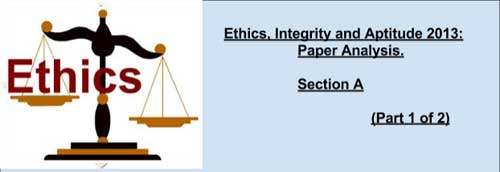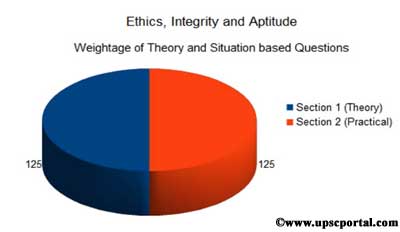(HOT) UPSC Current Affairs 2025 PDF
NEW! The Gist (NOV-2025) | E-BOOKS
(Analysis and Solution) Ethics, Integrity and Aptitude 2013 Paper

Ethics, Integrity and Aptitude 2013: Paper Analysis and Solution
Introduction of the Paper
The Ethics Paper of 2013, that was conducted for the first time in the history of Indian Civil Services, was full of surprises and shocks. Defying all the market speculations about the nature of the paper, it looked comparatively simple and theoretical. Most of the candidates found it easier than the other GS papers. Thus, Ethics paper became a source of mark-booster in the Mains Examination.
However, for those who did not have a clarity of concepts in Ethics, the paper became a nightmare. Thus, to help the student community, UPSCPORTAL presents a detailed analysis of the Ethics paper, along with the practical solutions.
Since the Paper was very long, we would be coming up with the different sections of the paper in very few days. So please wait for the upcoming articles for a comprehesive analysis of the paper.
Download Ethics Paper 2013
The Paper consisted of 2 broad sections-
-
Section A- dealing with theoretical and value based questions. It expected the candidates to express themselves, while writing the answers. As against the market speculations, the paper did not go into the technicalities of the issues of ethics. There were no questions asked from the government reports or international agreements. Thus, most of the coaching institutes failed in speculating the exam pattern. However, the nature of the section A was such that a candidate, with a clear understanding of the issues of ethics, would have been able to answer the questions without going into much problem.
-
Section B- dealing with situation-based hypothetical questions. This section was clearly framed to judge the analytical and decision making ability of the candidates. The questions asked the examinees to write down the various options that might be available in a given situation, and to choose the most appropriate course of action. This section, though mentioned in the syllabus, given by the UPSC, came as a surprise, as the weightage for this section was 50% of the total marks (125 marks).

Overall, the paper consisted of 14 broad questions, covered in the two sections. Interestingly, all the questions were compulsory. While the questions, in Section A carried 10 and 15 marks; those of Section B carried as high as 20 to 25 marks.
